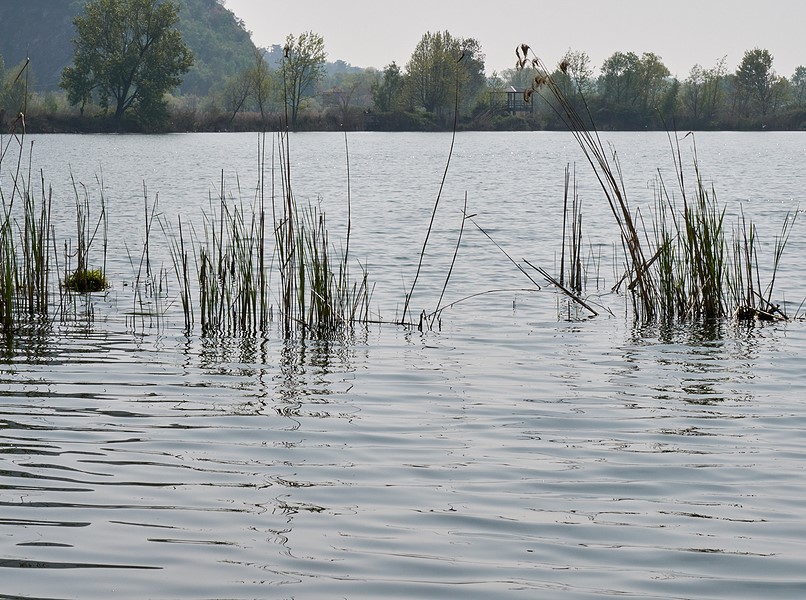News
Spotlight On: Land Rewetting In Water Management Schemes
Water supplies around the world are facing significant challenges, including climate change, pollution, urbanisation, more frequent extreme weather events, population growth and water mismanagement.
Demand is expected to outstrip supply by 40 per cent come the year 2030, so urgent action must be taken to build resilience into the water system and shore up supplies for future generations.
In the past, a risk-based reactive approach to water management has been adopted by policymakers and companies globally to mitigate the economic consequences of extreme weather events like drought and flooding, and the impact these have on the water cycle.
However, this strategy on its own will not be sufficient to protect resources and, as such, adopting nature-based solutions specifically designed to enhance ecosystems and protect biodiversity as part of water management plans will ensure safe and secure water supplies for all.
Land rewetting
One potential nature-based solution that could prove particularly effective is land rewetting, where the water table of drained peatlands is brought back to its original state, a vital measure to take in the pursuit of preventing CO2 emissions.
As explained by the Global Peat Initiative, the presence of peat is an indication that there was once plenty of water available for the accumulation and conservation of peat, as well as the carbon contained therein. For the most part, peatland degradation is down to deliberate water extraction and, once this extraction stops, the drained peatland will rewet.
In many cases, rewetting starts back up of its own accord when the pumps draining peatland are turned off. For gravity-drained peatlands, where the water runs out through the use of canals and ditches, rewetting can start once more when this infrastructure is no longer used.
However, rewetting can be supported through interventions such as filling in ditches, installing dikes or bunds, or building dams. Restoration may also require other measures, as well, such as introducing specific plant species to improve water quality.
It will also be necessary to work closely with landowners and managers as it’s likely that the costs of rewetting and restoration will be their responsibility, with support schemes and initiatives in place to make these projects attractive.
But one key point to note is that drained peatlands are typically associated with high energy and maintenance costs, while drainage-based agriculture leads to subsidence as a result of peat mineralisation, a loss of soil fertility, erosion and degradation, and CO2 emissions, as well as soil organic carbon loss.
The importance of peatland restoration
Peatlands are wetland landscapes made up of dead or decaying plants (also known as peat). These ecosystems are incredibly important, supporting local biodiversity and wildlife, as well as the landscape itself, water and the environment as a whole.
On a global scale, peatlands store more carbon than all the forests around the world combined, absorbing and reducing the amount of CO2 in the atmosphere. But when these peatlands dry out and start to degrade, the carbon stored within is either lost to the air or to the water, entering the atmosphere once again.
Peatlands also form an invaluable part of the water cycle, holding up to 20 times their own weight in water, which helps to slow flow and increases the resilience of local communities in the face of extreme weather events.
Raw water quality can also be improved through peatland restoration, as this reduces the amount of material being washed off the land into waterways around the country, thus helping to keep water treatment costs down.
Peat action plans for England
The good news for England is that the government’s 25 Year Environment Plan includes peatland restoration, essential given that just 13 per cent of peatlands in the country are in a near-natural state.
The approach will include using new funds (such as the Nature for Climate Fund) and different schemes to reward farmers and land managers for producing public goods, as well as sourcing private finance to support landscape management changes. The aim is to invest more than £50 million in peatland restoration by 2025, with 35,000 hectares to be restored by then.
However, this is just the start of the journey and the environment plan also sets out other commitments, including managing all of England’s soils sustainably by 2030, bringing 75 per cent of all Sites of Special Scientific Interest into favourable condition by 2042 and developing a nature recovery network to create or restore 500,000 hectares of wildlife-rich habitat.
How can businesses help?
Reducing water abstraction is one of the most significant ways in which businesses can help reduce pressure on water resources around the UK.
In order to achieve this, it’s necessary to know how and where you use water – and a water audit can help you develop a more in-depth understanding of your company’s water footprint.
If you’d like to find out more, get in touch with the H2o Building Services team today.
